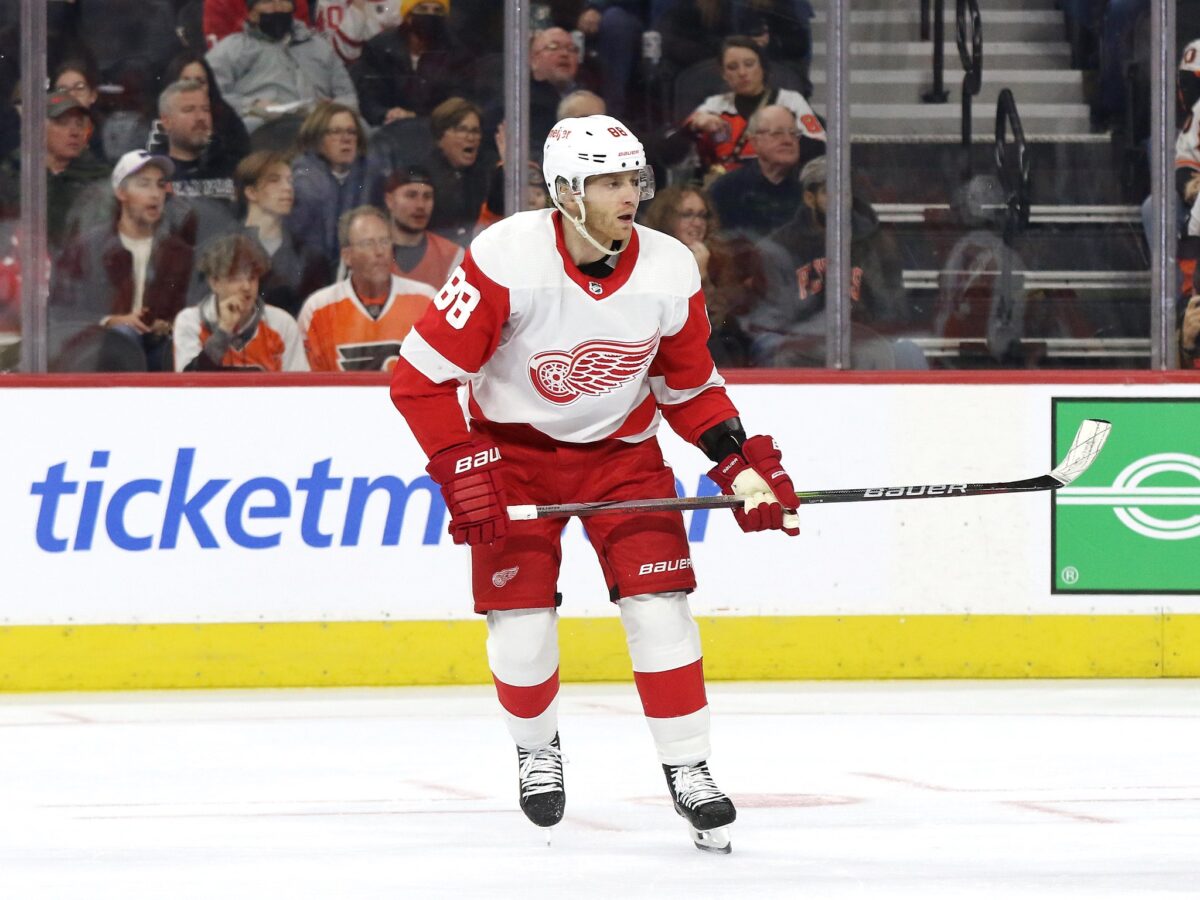Last year, one of the key factors in the Detroit Red Wings’ improved record was their power play. Their 23.1 percent conversion rate ranked ninth in the NHL in 2023-24.
In all, Dylan Larkin, Lucas Raymond, Alex DeBrincat, Patrick Kane, Shayne Gostisbehere, David Perron, and the rest of Detroit’s offensive players combined for 63 goals with the man advantage. Clearly, this was one of their strong suits.
But heading into the 2024-25 campaign, there was some uncertainty with the power play. I identified it as one of the four X-Factors that would determine the fate of Detroit’s season.
Gostisbehere, Perron, Robby Fabbri, and Daniel Sprong are no longer with the team. These four players combined for 27 percent of Detroit’s power play goals last season. While these players certainly had defensive warts, their offensive game was valued.
And through five games this year, the Red Wings have only scored three power play goals on 19 opportunities. Their current 15.8 percent conversion rate is a far cry from last season’s output.
Should we be concerned? In my opinion, the answer is no. Here’s why.
Red Wings’ Power Play Doing Everything Right
Despite the low conversion rate, there is reason to be hopeful about Detroit’s power play. A few reasons, actually.
For one, Detroit’s zone entries have been outstanding. PP1 features Kane and Raymond accelerating through the neutral zone following a drop pass from the quarterback – either Erik Gustafsson or Moritz Seider. Kane and Raymond attack the offensive zone blue line like an NFL triple option. One can either carry it in, pass the puck to the other streaking forward, or dish it off to either Larkin or DeBrincat just over the blue line. It truly is a diversified approach to zone entries.

Once set up in the offensive zone, the Red Wings have had great puck movement. They’ve cycled the puck well to all positions and haven’t forced too many passes. No one player has dominated puck possession so far this season.
In addition, Detroit’s underlying data suggests goals are coming. Through Sunday night, the Red Wings rank first in scoring chances per 60 (81.04), first in high-danger chances per 60 (40.52), and first in average shot danger (0.1456) with the man advantage.
Clearly, they’re doing something right, even if the goals aren’t arriving in the quantity that they’re hoping for. Plus, it’s worth noting that Detroit’s metrics compare favorably with last season’s team and their ninth-ranked power play:
- 2023-24 SCF/60: 60.82
- 2023-24 HDCF/60: 20.77
“We’ve averaged almost five and a half chances a game on the power play, so at least we’re getting those looks,” noted coach Derek Lalonde. “But we got to start putting those in the back of the net.”
All of this to say, Detroit‘s power play is ready to break through. It’s only a matter of time.
Final Word
While the Red Wings are doing a lot right, there’s still room for improvement. PP2 hasn’t done much of anything – perhaps keeping Marco Kasper in Michael Rasmussen’s old role will help in this regard. There also hasn’t been much consistency with which defenseman quarterbacks the two power play units given Gustafsson’s inability to hold down a role in the lineup.
Related: Red Wings’ Scoring Projections for 2024-25
Still, there’s reason to believe success is on the horizon. The zone entries, puck movement, and underlying data all support this. As with everything else pertaining to the Red Wings, a little patience is required.
Data courtesy of NHL.com and Natural Stat Trick.
